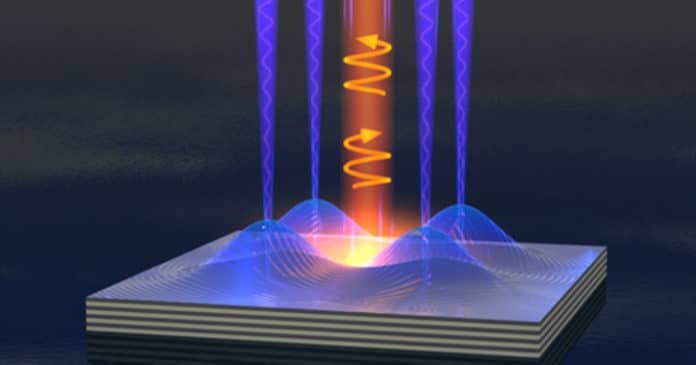Liquid light can be categorized as a superfluid, derived from the ability of particles to condense in a state known as a Bose-Einstein condensate (BEC).
How does this liquid light behave?
In a new study, scientists at the University of Twente demonstrate the effect of liquid light at room temperature. For this, they developed a microsize mirror with channels in it.
Inside those channels, photons flow like a liquid and try to stay together by choosing the path leading to the lowest losses. In this way, liquid light shows social behavior.
Within the channels, light travels as a superfluid and moves in a preferred direction. Here, extremely low temperature is not essential; it works even at room temperature.
Such a structure is known as the well-known ‘Mach-Zehnder interferometer, where a channel splits into two channels and then rejoins again. The wave nature of the photon can be observed in the interferometer, where a photon can be in both channels at the same time.
There are now two options at the reunification point: the light can either take a channel with a closed end or a channel with an open end.
Scientists, in this study, found that- by adjusting its frequency of oscillation, liquid can decide for itself which path to take.
UT researcher Jan Klärs said, “In this case, the photons try to stay together by choosing the path that leads to the lowest losses – the channel with the closed end. You could call it ‘social behavior.’ Other types of bosons, like fermions, prefer staying separate.”
The mirror structure that scientists developed resembles a laser. However, the significant difference is in the extremely high reflection of the mirrors: 99,9985 percent.
This value is so high that photons hardly get the chance to escape; they will be absorbed again. In this stadium, the photon gas starts taking the same temperature as room temperature by thermalization. Technically speaking, it then resembles the radiation of a black body: radiation is in equilibrium with the matter.
This ‘thermalization’ is the crucial difference between a normal laser and a liquid light.
Journal Reference:
- Mario Vretenar, Chris Toebes et al. Modified Bose-Einstein condensation in an optical quantum gas. Nature Communications, 2021; DOI: 10.1038/s41467-021-26087-0
